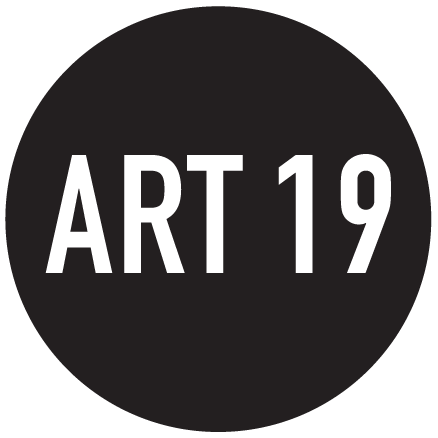Boston Globe : At the Addison, Yoko Ono invites you to look and please touch
By Murray Whyte Globe Staff, Updated February 4.
Gallery-goer Sarah Arcotta worked with the broken bits of "Mend Piece."JONATHAN WIGGS/GLOBE STAFF
ANDOVER — It takes no great insight to grasp the intentions of Yoko Ono’s “Mend Piece,” by now a chestnut of conceptual participatory performance (which sounds complicated, but it’s not). That it was first made in the 1960s, the last time the country fell apart so completely, has special resonance here and now, given the mess we’re in. “Mend Piece” is, literally and metaphorically, exactly what it says it is: Things break; what can we do but put them back together? Inevitably, they won’t be as they were. That’s not all bad, but it takes some work. And it’s the work itself, not the results, that matters.
Those acquainted with Ono mostly as a Beatles-breaker — the villain of the piece, pulling John away from Paul, George, and Ringo — might need some introduction: Before she and Lennon were camping out in a Montreal hotel-room bed for days on end or proselytizing the virtues of bagism (literally, placing one’s self in a bag to be free of prejudice), Ono aligned herself with the Fluxus group of conceptual artists who, in the 1960s and ’70s, were busy transforming art from a thing you made into a thing you did. (If you want to blame anyone for performance art, it’s them.)
Fluxus, a loose, trans-global affiliation of artists, poets, and musicians — the Minimal music of John Cage was a powerful influence — was intentionally slippery and under-defined. A common thread was prioritizing experience over things: “Fluxus is ‘the event,’” said George Brecht, one of the movement’s founders, a deliberately broad and cryptic definition. The German artist and Fluxus associate Joseph Beuys once spent three days straight in a room with a wild coyote; when the creature, finally acclimated to his presence, allowed Beuys to touch it, the performance ended. In 1964, Ono debuted “Cut Piece,” a performance for which she stayed stock-still while gallery-goers took turns with scissors, shearing off bits of her clothing. It ranks as one of the movement’s iconic works.
“Mend Piece” shares the spirit of such things, if not quite their spleen. Given the times we’re in, that feels about right. In a new installation of the work at the Addison Gallery of American Art, three long white tables are strewn with tidy mounds of shattered porcelain cups and saucers. Perched at the table edges are socially-distanced white plastic chairs, each with its own spools of string and twine and tubes of glue. Shelves on the wall are lined with shards strung and stuck together in various haphazard assemblies. What happens next is both obvious and not. I’ve seen “Mend Piece” twice before, in New York and Toronto, so I knew what to do. But you never really know until you’ve done it, which is exactly the point.
A completed piece from Yoko Ono's "Mend Piece" installation at the Addison Gallery.JONATHAN WIGGS/GLOBE STAFF
I arrived early on a Saturday morning and found myself alone in the space but for a giddy security guard who had fallen under the “Mend Piece” spell. (”I’m the guy who puts those things away for the new crop to come in,” he effused through his mask, eagerly offering advice and encouragement.) He left me there, but I wasn’t alone for long. Two young women strolled in and sat at the table next to mine, looking at each other in amused silence before reaching for a few pieces. I’d roped together a few jagged bits by then — not very successfully; a weak attempt to knot them into a bundle had the opposite effect. But it was the meager inspiration these two needed. Soon, we were all happily making, and failing, as one.
You could take “Mend Piece” as a meditative exercise, the work of your hands giving relief to your mind, and don’t we all need some of that just now. And surely, it’s therapeutic to have a problem that’s solvable (however badly) in a world where insurmountable mass-scale disaster has become everyday reality. But that’s selling “Mend Piece” a little short. As we made, the women and I got to talking — about Ono, or the Beatles, or how long it took for the glue to dry. I shared an e-mail exchange I had with Ono a few years before, when “Mend Piece” was in Toronto and I was with the Toronto Star. (A lady of few words, she is.) That sent us in another direction. “I think we’ll always be healing and breaking,” one of the women said, hitting the nail on the head.
As I finished up three of my little sculptures, the room flooded with a half-dozen kids under age 10 who grabbed at broken bits and excitedly unspooled string. For them, “Mend Piece” wasn’t a problem to be solved so much as a game to be played. That’s the spirit, I thought, as I deposited my clunky little works on the shelf next to the others. One of them — my favorite — was three long, sharp bits bound by twine and string. Too loosely, it turned out — they slid and chafed against each other when I put down the piece too quickly. I tightened the twine, tied it off, and it held — for now. It wasn’t what I had in mind. But what is, really? “Mend Piece” reminds us of the forever unfinished business of living, and that the journey, not the destination, is what counts.
YOKO ONO: MEND PIECE
Through April 4, The Addison Gallery of American Art, 180 Main St., Andover. 978-749-4000.
This article was published on www.bostonglobe.com


